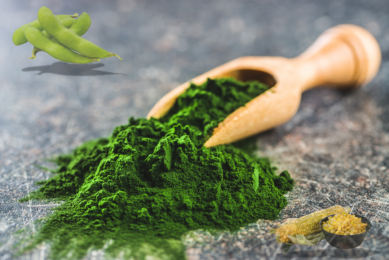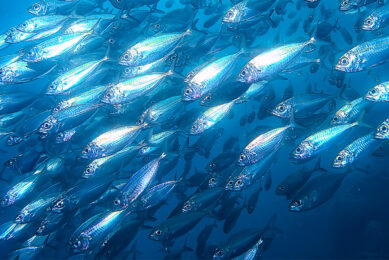A little bit more phytase please

‘High levels of phytase can save money’ was the header of one of the news items that was published this week on AllAboutFeed.net. Enzymes are big business and popular than ever, boosted by price pressure of raw materials and increased use of plant materials in animal diets.
During the last 30 years, research has led to increased use of soybean meal and other plant material as protein sources in animal feed. One problem that had to be overcome was the presence of anti-nutritional factors, including phytate-bound phosphorus, in plant meal. phytate-bound phosphorus is not digested by monogastric animals, but can be effectively converted to available phosphorus by adding the enzyme phytase to the diet.
More is better
Over the last years, more insights have been gained in the effects of recommended doses of phytase and adding higher levels. Common recommendations, suggesting a 500 FTU/kg feed dose of a modern phytase, can release 0.10-0.15% available phosphorus. It is a level which is sufficient to provide worthwhile cost savings during feed manufacture. Superdosing, in contrast, is defined as using phytase at over 500 FTU/kg feed in an attempt to completely degrade all soluble phytate in the diet, effectively eliminating its anti-nutrient effects. The benefits are typically referred to as ‘extra-phosphoric’ (i.e. beyond simple phosphoric release), and result from increased feed intake, improved nutrient digestibility, additional mineral release and reduced energy costs of digestion.
The news item on our website was about a new study that looked into the effect of the so called ‘superdosing’ principle in poultry diets. Researchers from the Nottingham Trent University in the UK found that superdosing rapeseed meal diets with phytase resulted in 76% of dietary phosphorus being absorbed, which is 2% higher than that absorbed in soy bean diets supplemented with the recommended dose. In addition to this, the amount of calcium and phosphorus excreted reduced by 9% and 11% respectively, compared to diets without phytase, and by 4 and 5% compared to diets with the recommended dose. Also from an environmental standpoint, this is good news!
Enzyme market booming
This week, a new report also caught my eye: ‘Feed Enzyme Market worth $1.2 Billion (870 million euro) by 2018’. The feed enzyme market was valued at $781.7 million (567 million euro) in 2012 and expected to increase to $1.2 billion by 2018. Wow! That is what I call booming business. Obviously the need for phytase and other enzymes is growing rapidly. This is mainly fuelled by pressure on raw material costs, adding more plant based material in the diets and using alternative (often less quality) protein sources. Adding high levels of phytase into animal diets opens up opportunities to manage these topics.
Although much of the research on superdosing phytase concentrates on poultry I am thinking of the huge potential for phytase in aquaculture. The digestibility and availability of phytate phosphorus for fish, is very low. Addition of microbial phytase in aquafeed increases the bio-availability of phosphorus and, hence, there is less discharge into the aquatic environment, thereby causing less pollution. But the action of dietary phytase varies from species to species. I bet that the coming years, more research will be conducted to find ways to optimise phytase supplementation (and the extra effects of superdosing) in aquaculture. Modern animal production is all about feed use efficiency and improved production, and that’s why we need a little bit more phytase please.











